'Our art is a response to our world, to what we observe' – photo-story by Eszter Halasi
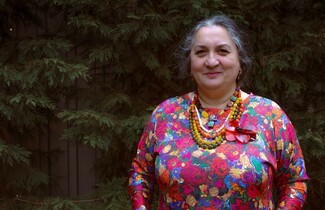
"It's not just the responsibility of the majority society; the efforts of Roma intellectuals and artists are important too!" Photo-journalist Eszter Halasi travels back to her native Hungary to meet Erika Varga, the creative force behind Romani Design - exclusive to the Travellers' Times.
In a cozy nook in Erika Varga’s Budapest home, lies the heart of Romani Design. As I sat down to talk with Erika, the leader and creative force behind the Hungarian brand, our conversation wove an intricate fabric of complex traditions, challenges faced by youth today, activism, and the responsibilities shouldered by Roma-origin artists and intellectuals.
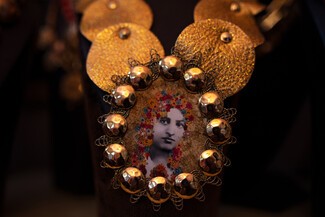
Reflecting on the factors that contributed to their success, Erika emphasized the importance of innovative communication. "Fashion and design provide a universally understandable language," she explained. "Yet, to sustain success over time, strong awareness and perseverance are necessary. These elements' essence and strength determine whether something will be successful or remain a failure."
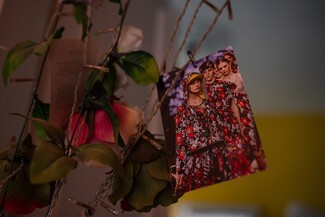
Discussing the preservation and abandonment of traditions and cultural elements, Erika highlighted the importance of preserving the language. "We have preserved our language as descendants of a tradition-keeping Olah Roma lineage," she said. "However, unfortunately, linguistic assimilation is quite high among the generations following us." Erika traced this trend back to historical injustices, mentioning The Holy Roman Empress Maria Theresa's reign in the 1800s, and the policies enforced that promoted assimilation and worsened the loss of cultural identity.

"The abandonment of our own communities due to work and education, the mobilization, inherently creates the situation where recreating the original cultural identity, as experienced in childhood or within the community, becomes a challenge," Erika explained. "Among the elements voluntarily sacrificed are dressing customs, hairstyles, family celebrations, and language - which fades last."
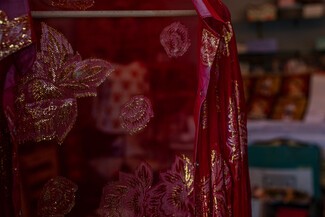
Speaking of the consequences of this loss, I asked: "Can it be said that the mistake of previous generations is the loss of cultural knowledge?"
"Perhaps 'mistake' is a strong expression, but there is truth in it,” replied Erika. "We need to consider whether accepting promises communicated by the majority, sacrificing our own cultural treasures and ourselves, is truly the best answer for Roma people?”
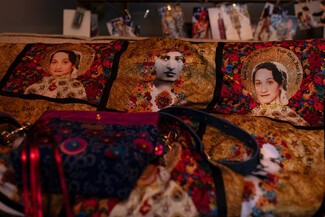
When we discussed Romani Design's responsibility as artists, Erika emphasized their role in shaping opinions. "Every generation has a responsibility within the given social framework," she noted. "It's not just the responsibility of the majority society; the efforts of Roma intellectuals and artists are important too! Our art is a response to our world, to what we observe," adding that she expressed her desire for people to understand the value of Roma culture through Romani Design’s work.
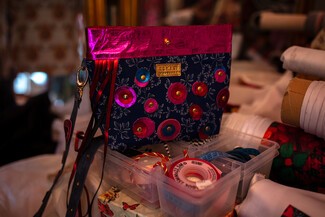
Erika highlighted the importance of Roma identity, stressing the need to reclaim it for future generations. We discussed the reception of Romani Design’s art among today's youth. "Internationally, we see a change where traditional attire is gaining increasing importance as a form of communication," Erika explained. "The catalyzing effect of Romani Design has been crucial in this change over our 14 years of committed work."
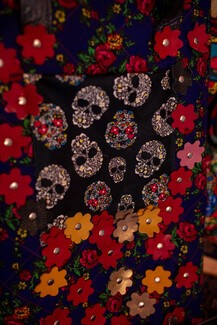
Erika also touched on the complex issue of cultural identity. "For me, it's a challenge to deny my Roma heritage," Erika said. "I can imagine it's even harder for a young (Roma) person, say an adoptee, to accept this cultural identity. But I think the parents have a great responsibility in passing on or preserving cultural heritage,” she continued.
”The family is the main environment where parents shape a framework of fundamental values for the child," Erika emphasized. "To prepare our children to make sound decisions later in life, we must teach them awareness of consequences. It's crucial for children to understand their cultural identity. This shield of cultural pride helps navigate life's challenges."
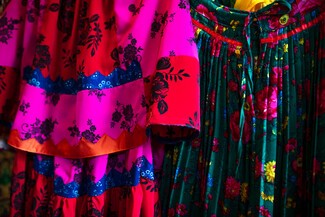
Erika stressed the importance of smart decisions in preserving identity, whether through traditional motifs or a unique style that reflects one's origin. When we talked about a Roma young person who leaves the community for education and then feels rejected upon return to the community, Erika was decisive. "That doesn't happen," she said. "If a skilled individual wants to return to the community, they are welcomed."
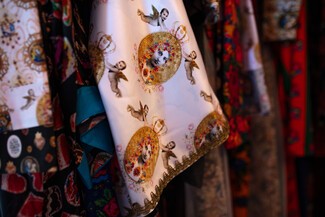
She detailed how communities recognize the value of such individuals, whether they are doctors, teachers, or other professionals. "In reality," Erika explained, "often the 'whitened' Roma individual decides not to return." She explained that some individuals avoid acknowledging their Roma identity due to societal pressures. "Many Roma families live with this lie or hide their identity out of fear, feeling that the hardships of being Roma outweigh its benefits." Finally, she concluded her thoughts: "We must teach our children what it means to be Roma. To navigate a world where being Roma is seen as a hardship, we must instill in them the pride and strength of our cultural heritage."
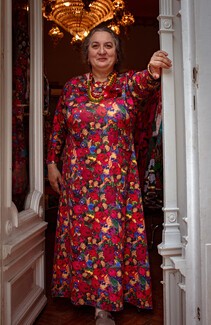
Erika Varga and her sister Heléna Varga run Romani Design. With their true stories, they continue to weave threads of tradition, activism and Roma identity into their motifs, promoting communication between their non-Roma (Gádzso) and Roma communities.
Photographs and words by Eszter Halasi – Exclusive for the Travellers’ Times